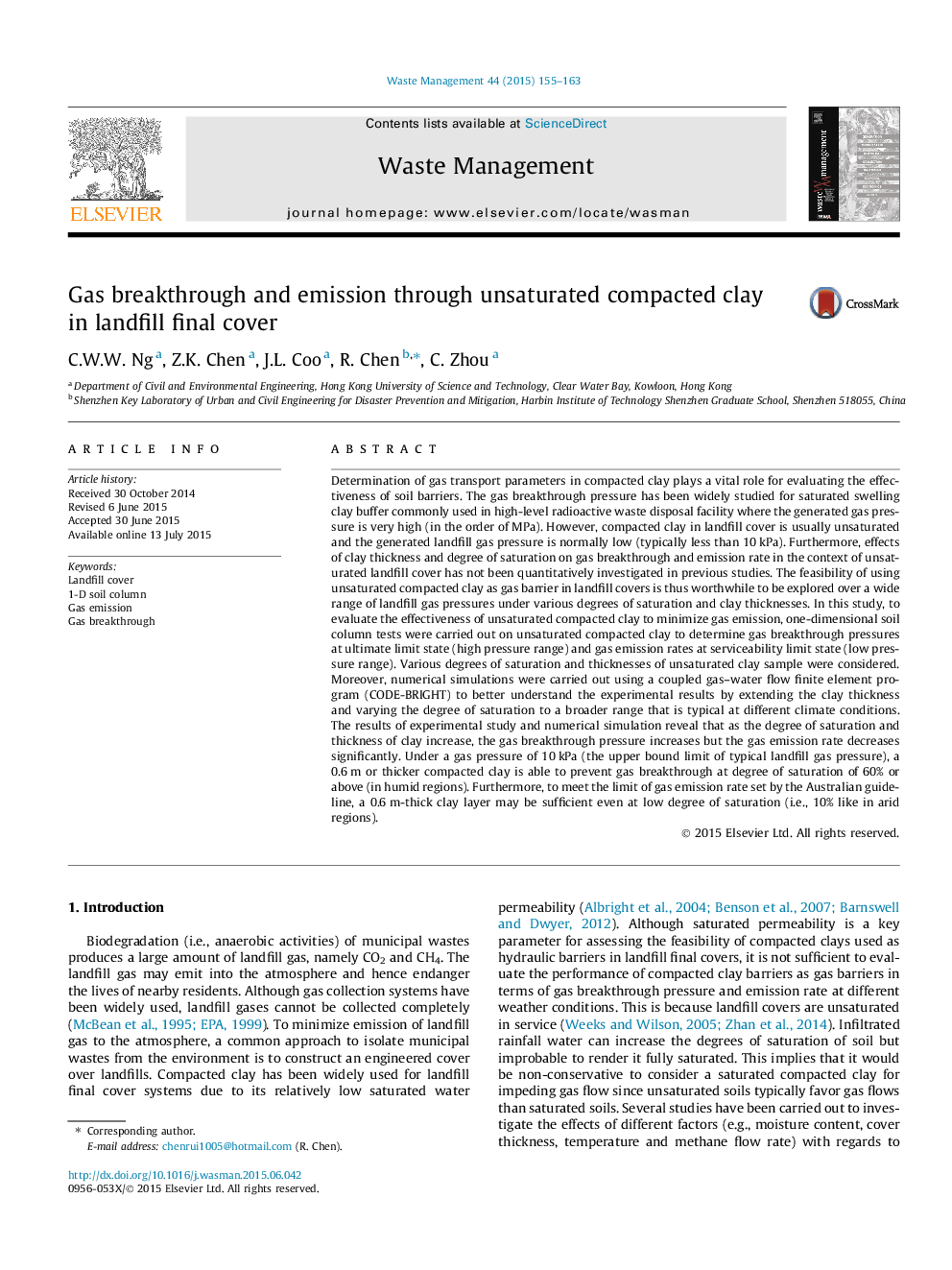| کد مقاله | کد نشریه | سال انتشار | مقاله انگلیسی | نسخه تمام متن |
|---|---|---|---|---|
| 4471366 | 1622641 | 2015 | 9 صفحه PDF | دانلود رایگان |
• Explore feasibility of unsaturated clay as a gas barrier in landfill cover.
• Gas breakthrough pressure increases with clay thickness and degree of saturation.
• Gas emission rate decreases with clay thickness and degree of saturation.
• A 0.6 m-thick clay layer may be sufficient to meet gas emission rate limit.
Determination of gas transport parameters in compacted clay plays a vital role for evaluating the effectiveness of soil barriers. The gas breakthrough pressure has been widely studied for saturated swelling clay buffer commonly used in high-level radioactive waste disposal facility where the generated gas pressure is very high (in the order of MPa). However, compacted clay in landfill cover is usually unsaturated and the generated landfill gas pressure is normally low (typically less than 10 kPa). Furthermore, effects of clay thickness and degree of saturation on gas breakthrough and emission rate in the context of unsaturated landfill cover has not been quantitatively investigated in previous studies. The feasibility of using unsaturated compacted clay as gas barrier in landfill covers is thus worthwhile to be explored over a wide range of landfill gas pressures under various degrees of saturation and clay thicknesses. In this study, to evaluate the effectiveness of unsaturated compacted clay to minimize gas emission, one-dimensional soil column tests were carried out on unsaturated compacted clay to determine gas breakthrough pressures at ultimate limit state (high pressure range) and gas emission rates at serviceability limit state (low pressure range). Various degrees of saturation and thicknesses of unsaturated clay sample were considered. Moreover, numerical simulations were carried out using a coupled gas–water flow finite element program (CODE-BRIGHT) to better understand the experimental results by extending the clay thickness and varying the degree of saturation to a broader range that is typical at different climate conditions. The results of experimental study and numerical simulation reveal that as the degree of saturation and thickness of clay increase, the gas breakthrough pressure increases but the gas emission rate decreases significantly. Under a gas pressure of 10 kPa (the upper bound limit of typical landfill gas pressure), a 0.6 m or thicker compacted clay is able to prevent gas breakthrough at degree of saturation of 60% or above (in humid regions). Furthermore, to meet the limit of gas emission rate set by the Australian guideline, a 0.6 m-thick clay layer may be sufficient even at low degree of saturation (i.e., 10% like in arid regions).
Journal: Waste Management - Volume 44, October 2015, Pages 155–163
